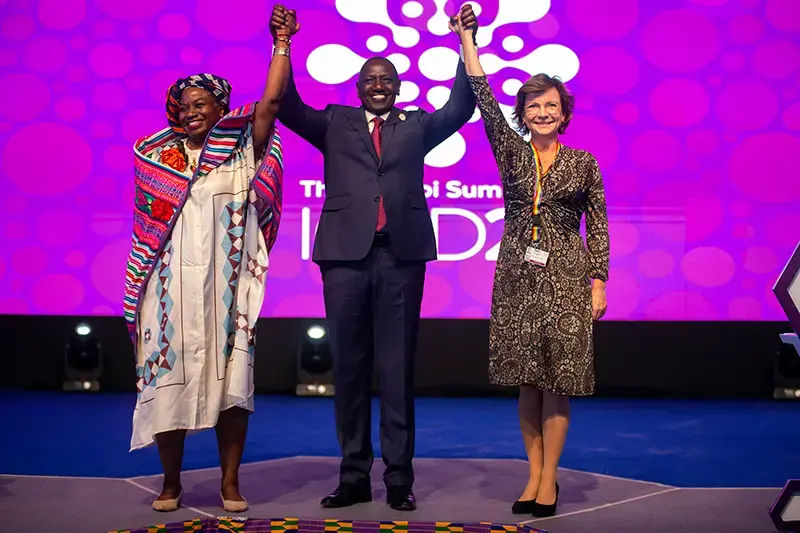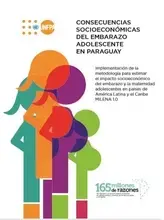ASUNCION, Paraguay - Between 15 and 20 per cent of births in the Southern Cone are to teenage mothers, a proportion that has remained steady over the last decade. According to the Report on Adolescent Fertility and Motherhood in the Southern Cone: Notes for the Construction of a UNFPA Common Agenda, there are indications, at least in Brazil and Paraguay, that adolescent girls are now getting pregnant at increasingly younger ages.
In addition to that, between 40 and 55% of adolescent girls in countries in the Southern Cone have already had sexual intercourse, which means they are also initiating their sexual life at increasingly younger ages. “We are facing an ethical, moral and political challenge. Today, our governments are taking the political responsibility of addressing one of the different problems that lead to inequality. Thousands of girls in the 10 to 19 age range are currently getting pregnant,” said Uruguay’s Vice-Minister of Health, Dr. Cristina Lustemberg.
Faced with this reality, the governments of Argentina, Brazil, Chile, Paraguay and Uruguay have joined efforts and launched the Regional Strategic Framework on Prevention and Reduction of Unintended Adolescent Pregnancy. This initiative is the result of the work the United Nations Population Fund, UNFPA, has been supporting for almost three years, and it addresses one of the priorities for governments in the Southern Cone, which have acknowledged the fact that adolescent pregnancy contributes to social, gender, health and economic inequalities in the region.
Paraguay’s Minister of Children and Adolescents, Ricardo González, did not hesitate to affirm that poverty is one of the elements that contribute to high adolescent pregnancy rates. “Talking about adolescent pregnancy involves acknowledging a harsh reality. Understanding that in our country every day 2 girls in the 10 to 14 age range give birth requires understanding that those girls will miss the possibility of thriving in life,” said Paraguay’s Public Health Minister, Dr. Antonio Barrios.
The occurrence of births to adolescent mothers under age 15 is highly alarming. In one year, they add up to approximately 180 births in Uruguay, 674 in Paraguay, 900 in Chile, 3,000 in Argentina and 21,000 in Brazil. These childbirths, and the mothers having them, require specific forms of treatment, analysis and social policies that must include the element of prevention, given the complexity of their causes and their severe impact.
“Adolescent pregnancy poses a challenge to sustainable development; it is one of the main challenges in the 2030 Agenda,” said UNFPA’s Regional Sexual and Reproductive Health Advisor, Dr. Alma Virginia Camacho.
Adolescent pregnancy: a barrier to education and healthy development
Pregnancies among girls under age 15 are often linked to acts of abuse or coercion. The situation becomes even more complex when the abuse occurs within the family, considering the psychological consequences on adolescent girls: those who were supposed to protect them were responsible for the abuse or complicit to it, or will often retaliate at them for reporting it.
“For a country like Brazil, creating opportunities for the population to exercise their right to health, education, social support and protection is essential so they can fulfill their life projects,” said the Head of the Strategic Programmatic Actions Department of Brazil’s Ministry of Health, Thereza de Lamare.
On the other hand, it is not easy to determine the real magnitude of situations of abuse or coercion, considering that in those cases where the adolescent girl affirms she “consented” to having sexual intercourse, she does it without being really aware of what she consented to, or the potential consequences of such consent. This highlights the key role played by the education sector in preventing sexual violence and abuse through comprehensive sexual education.
As far as the link between education, pregnancy and motherhood is concerned, we find that a significant proportion of adolescent girls do not go to school, which means broader agreements must be reached to provide comprehensive sexuality education outside the school environment.
Roberto Candiano, Undersecretary of Argentina’s Children, Adolescents and Family Secretariat, affirms that in order to reach those adolescents outside the school system, “it is really important to develop integrated health, education and social development policies.”
The situation is compounded by the fact that the CSE budget is insufficient to strengthen programs and initiatives and scale them up on a national level. “We need to invest not only in pregnancy prevention, but also in the determinants behind those pregnancies,” said Dr. Carolina Asera, from Chile’s Ministry of Health.
The fact that all the countries in the Southern Cone are in different moments of implementation of sectoral strategies designed to prevent and reduce adolescent pregnancies without having achieved the reductions expected, requires a thorough assessment of the potential gaps between efforts and achievements. “This demands a significant personal and institutional commitment, a political commitment,” said Paraguay’s Minister of Education and Science, Dr. Enrique Riera.
It is for this reason that this joint agreement involves not only acknowledging the issue, but also addressing the challenge of guaranteeing the resources necessary to deal with it, a commitment that the authorities are willing to make.
Text: Carolina Ravera Castro.



